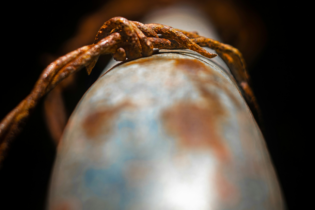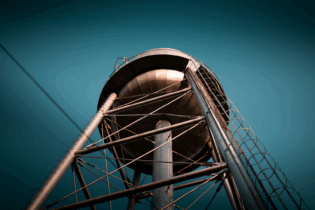Q. With regard to water and wastewater applications, what is ERWAT’s core business function?
A.ERWAT currently manages 19 wastewater treatment works (WWTWs) and specialises in the treatment of wastewater, both domestic and industrial. ERWAT also has a SANAS (South African National Accreditation System) accredited laboratory where bacteriological, biological and chemical analysis is done and industrial wastewater management services are rendered. Q. How is ERWAT involved in the Green Drop Awards i.e. the readiness process from all sites, etc? A.ERWAT has been participating in the Green Drop Certification programme since its inception in 2009, when it received an Excellence Award for large systems. A collaborative approach is required, from Ekurhuleni Metro Municipality,(EMM)as a water services authority (WSA), and ERWAT as a water services provider (WSP), to prepare for the Green Drop Assessments. A Green Drop Working Committee has been established, which comprises of EMM officials and ERWAT employees from different disciplines, to ensure that all requirements for the Green Drop Assessment are met, using the six Green Drop Criteria. The committee meets every month and an action plan has been drawn to allocate tasks, responsibilities and timeframes to ensure readiness for the 2011/2012 Green Drop Assessment for all 19 WWTWs. A Green Drop Acceleration Plan has also been developed, in line with ERWAT’s strategic objective to fast track the implementation of projects, which will ensure compliance with the Green Drop Requirements for all 19 WWTW’s for now and the future.Q. What is your view on the Blue and Green Drop Certification process? Are the regulations set by the DWA within reason? How has this certification improved water and wastewater networks within municipalities?
A. The Green Drop certification programme is a long awaited and welcome initiative. Because it is an incentive-based regulation approach, it provides a sense of reward as opposed to enforcement, and promotes a spirit of excellence. It would be ideal to compare every aspect of the same caliber and size of the municipalities against their fellow counterparts. It is, for example, difficult to measure ‘excellence’ if one municipality monitors their effluent once a month and have a Green Drop while another monitors its effluent daily, but does not have a Green Drop. However, the certification program is still too much in its embryonic stage to be criticised for fairness. The regulations set by DWA are within reason, since they represent everything that needs to be done by municipalities to ensure protection of public health and the environment. The 90% limit set as a minimum requirement to achieve a Green Drop status is very much within reason, considering that 95% is in actual fact the limit imposed on many water use authorisations. The Green Drop certification programme has brought back the passion required in managing our most valuable resource, water. The program has invigorated some of the most forgotten fundamentals of wastewater treatment principles and objectives. In ERWAT, from the Board of Directors to the general workers, everybody speaks the same language, namely Green Drop! Q. In the last five years, what have been ERWAT’s biggest projects? A.ERWAT has completed and initiated a few projects in the last five years, such as the construction of a sludge digestion and dewatering facility at Waterval WWTW, ERWAT’s biggest plant, near the Klip River at a cost of R47 million. The mechanical, electrical and electronic equipment and installation will amount to another R58 million and is expected to be completed by March 2013.A new module, namely module 4, was constructed at the Waterval WWTW at a cost of R86 million. The Hartebeestfontein WWTW was rehabilitated at a cost of almost R72 million. The inlet works at ERWAT’s Daveyton WWTW was also upgraded, while some R4 million was spent to modify the Heidelberg WWTW.






